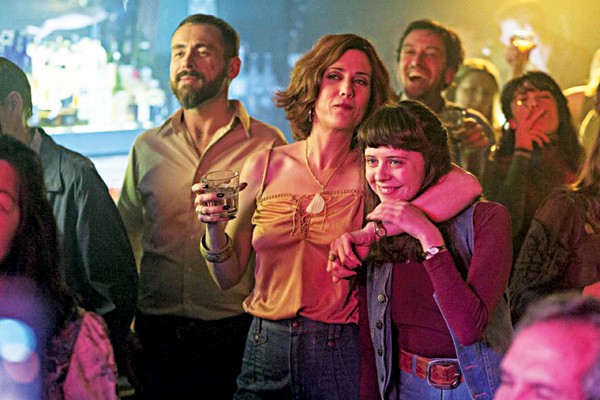From the good Avengers: Age of Ultron to the epically horrible Fantastic Four, 2015 has been full of comic-book adaptations. But the best one of them all contains no superheroes, no megalomaniacal villains, and no Robert Downey, Jr.
Phoebe Gloeckner’s 2002 book The Diary of a Teenage Girl: An Account in Words and Pictures may not be a comic book in the same way X-Men is, but it certainly falls under the umbrella of “sequential art,” the term Scott McCloud coined in Understanding Comics: The Invisible Art. Comics have an advantage when it comes to being chosen for screen adaptations, because they come with a pre-cooked visual aesthetic. But even out-there movies like Guardians of the Galaxy are all strictly photo-realistic. Even when they’re depicting fantastic characters and otherworldly events, they take pains to maintain the illusion that what’s happening in front of the camera is actually happening in the real world. Burned by the “BAM!” and “POW!” of the campy, 1960s Batman series, adaptations of the most visually inventive storytelling medium play it safe. It’s a shame, because when someone like Edgar Wright abandons photorealism in Scott Pilgrim vs. the World, the results can be spectacular. But Wright’s innovative streak got him fired from Ant-Man, so nobody in the superhero realm is willing to go there any more.

Kristen Wiig and Bel Powley
In Marielle Heller’s adaptation of The Diary of a Teenage Girl, the equivalent of the “BAM!” is a stream of doodled hearts bursting forth from a phone, or the disembodied head of counterculture cartoonist Aline Kominsky-Crumb dispensing life advice while floating down a San Francisco street. Heller keeps her film’s point of view firmly within the head of Minnie (Bel Powley), a 15-year-old aspiring cartoonist growing up in the wild and woolly Northern California of 1976. Minnie and her sister Gretel (Abby Wait) live with their mom Charlotte (Kristen Wiig), a feminist who divorced the girls’ conventionally conservative stepdad Pascal (Christopher Meloni) to live the wild life.
Unfortunately, when Minnie’s teenage sexual awakening overtakes her, the nearest man is her mom’s boyfriend Monroe (Alexander Skarsgård), some 20 years her senior. This is potentially very squicky territory, but there’s nothing rapey about the affair that blooms between Minnie and Monroe. If anything, Minnie is the aggressor. Monroe has the notion that something’s not right, but it’s the pre-AIDS era of free love, and he and Minnie have excellent chemistry, so he goes with it. Minnie vacillates between love and hate for Monroe, but he’s little more than a featured player in her internal drama. One of the film’s best scenes takes place at the kitchen table, where Charlotte encourages Minnie to dress sexier to attract the boys at school. “You have a kind of power. You just don’t know it yet,” she says, unaware that Minnie is exploring the limits of said power by bopping her boyfriend.
Powley, who is actually 23 years old and British, is a revelation as Minnie. As a character, she’s somewhere between Ferris Bueller and Enid from Ghost World. But she’s fully realized and believable as she alternately dives into adult sexuality and recoils from it. Everyone is good here, from Wiig’s empathetic rendering of a too-young mother who likes cocaine too much, to Skarsgård’s porn-stached vitamin-salesman-turned-clueless-Humbert Humbert. Heller and cinematographer Brandon Trost paint the glam-rock decadence of the 1970s with gritty affection, and when Minnie’s imagination overflows, animator Sara Gunnarsdóttir creates fluid, hand-drawn animation flourishes on the “real world.”
In less-sure hands, this could have been a creepy debacle. But Heller, who first adapted the work for the stage, knows the material inside out, and with the Sundance Institute at her back, she has created an impeccably crafted film. The reason why The Diary of a Teenage Girl is able to take on edgy material with visual flair is that it cost about 200 times less than Avengers. With a lot less on the line, the producers gain the courage to let the creative team do their jobs without trying to pander to all conceivable audiences. I liked Avengers, but if the same money will buy a hundred more movies like this, I can live without another superhero sequel.